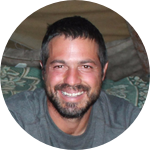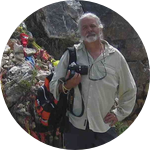About This Project
Large-scale communal game drives among humans have never been scientifically documented in action. This study will record and analyze Gran Chaccu--an annual communal game drive in the Peruvian Andes where hundreds of people cooperate to corral thousands of wild vicuña for their wool. An aerial drone will be used to record the size and dynamics of these events. The study will advance our understanding of archaeological game drive complexes and the evolution of cooperation in human societies.
Ask the Scientists
Join The DiscussionWhat is the context of this research?
Habitual cooperation among non-kin is biologically unusual, yet it is a defining behavior of the human species. How such hyper-cooperation evolved in human societies is an active area of scientific research. Among the most ubiquitous and oldest archaeological clues to human hyper-cooperation are communal animal drive complexes, which are complexes of stone walls, animal holding pens, and hunting blinds that ancient societies constructed to aid in the capture of big game such as bison, pronghorn, and wild sheep. Despite their archaeological ubiquity, we currently know little about how animal drive complexes were used. This ethnoarchaeological study will clarify the archaeological record of animal drive complexes.
What is the significance of this project?
This study of Gran Chaccu will constitute the first scientific documentation of large-scale cooperative animal drives in action. By mapping vicuña drive complexes, counting participants and vicuña, and analyzing participant social structure, I will be able to model relationships between the scale of animal drive complexes and the scale of cooperation. Such models will provide a critical link for inferring the scale of prehistoric cooperation from the archaeological record. Furthermore, I will be able to model the costs, benefits, and risks of large-scale cooperative animal drives. Such models can be used to explore why large-scale cooperative hunting emerged in the past. Ultimately, such inferences will contribute insights into the evolution of hyper-cooperation in human societies.
What are the goals of the project?
This ethnoarchaeological study will document at least three Gran Chaccu events in southern highlands Peru between August and December of 2016. My current funding will support travel and ground-level research including interviews with participants, notes on participation networks, and photographic documentation. With the additional financial support requested here, I would conduct drone-based aerial photography to document Gran Chaccu from a birds-eye view. From aerial video and imagery, I will map terrain and infrastructure, calculate areal extents of the drives, count participants, and count animals. With these data, I will produce socioeconomic models to define relationships among infrastructure, demography, costs, benefits, and risks in cooperative animal drives.
Budget
I recently received funds from the University of Wyoming's George C. Frison Institute to initiate the Gran Chaccu study. While these funds will allow me to conduct basic on-the-ground documentation of Gran Chaccu events, I am currently unable to accurately record areal extents, numbers of participants, numbers of vicuña, physiography, and infrastructure of Gran Chaccu events. Documenting those large-scale variables requires a birds-eye view, which can be achieved with drone technology.
I am therefore requesting funds to purchase a drone photography system that will aid the documentation of Gran Chaccu events. Drone-derived data will contribute to robust models of large-scale cooperative game drives, which will lead to better interpretations of archaeological game drive complexes. Ultimately, such improved interpretations of the archaeological record will advance our understanding of the evolution of large-scale cooperation in human societies.
Endorsed by
Meet the Team
Randy Haas
I am an archaeologist who studies human evolutionary ecology and the emergence of social complexity through the material record of prehistoric hunter-gatherer and early agricultural societies. My most recent research examines how (a) hunter-gatherer mobility gives rise to complex settlement patterns, or cultural geographies, (b) cooperative behavior evolves and persists in hunter-gatherer societies, and (c) large-scale demographic patterns among hunter-gatherer and early agricultural societies respond to changing ecological conditions. My primary areas of field research include the Andean highlands and US Southwest. My areas of technical expertise include quantitative methods,geographic information systems and spatial analysis, agent-based modeling, social network analysis, and lithic analysis.
Project Backers
- 12Backers
- 102%Funded
- $1,640Total Donations
- $136.67Average Donation


